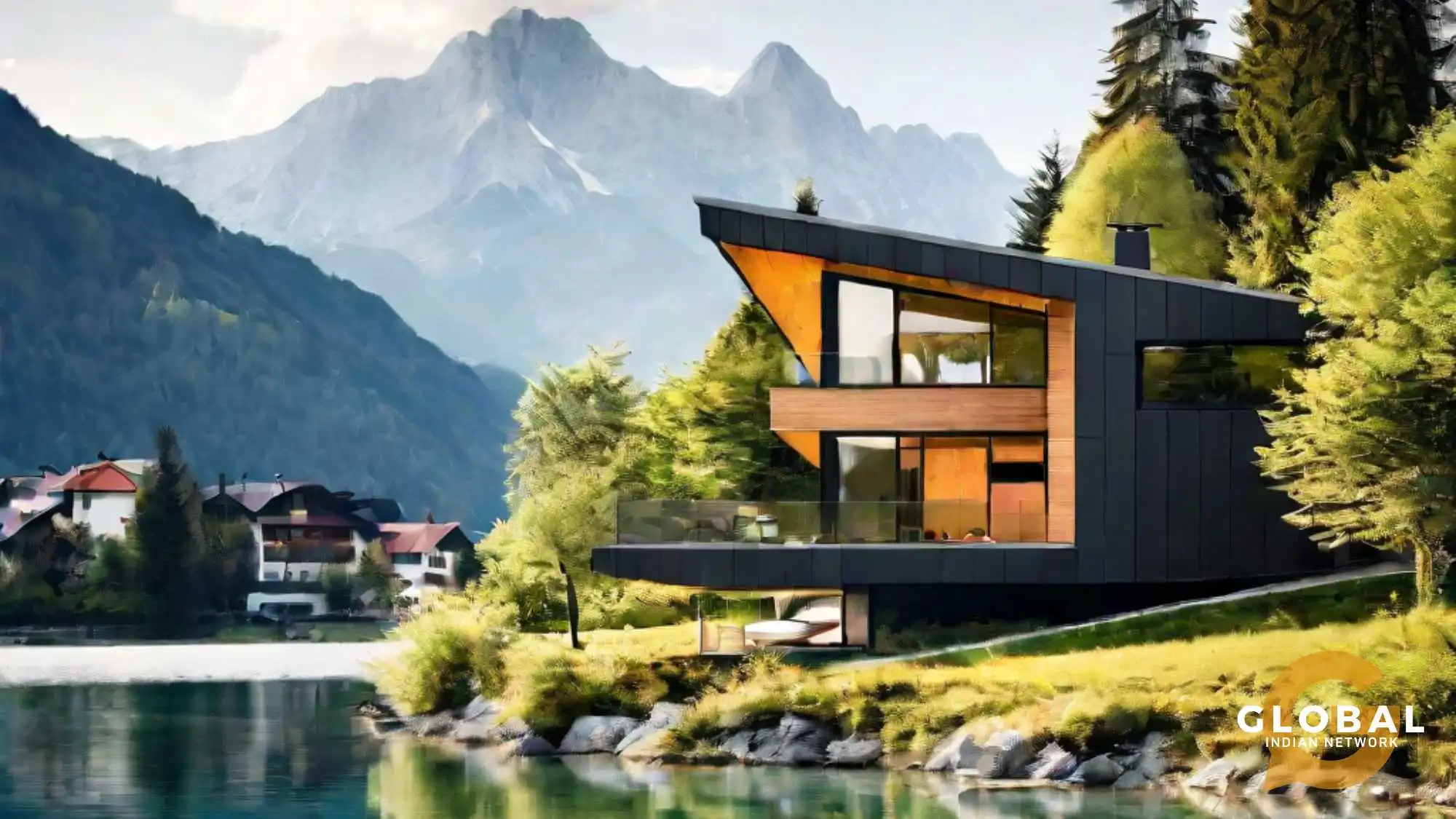Modular or prefabricated housing in Slovenia is gaining popularity due to its factory-built construction, incorporating plastering and fixtures like kitchens and bathrooms, serving various purposes, including permanent residences, Airbnb-style additions, and eco-friendly, energy-efficient living spaces.
The completed modules are transported to the site for assembly, offering a convenient and efficient building process that emphasises sophisticated, energy-efficient, and easily assembled designs for apartments and houses, making it a compelling and adaptable residential option catering to diverse housing needs influenced by factors such as interest rates, GDP growth, demographics, cultural environment, government policies, and global economic conditions.
In this article, you will find the necessary parameters and relevant details that will help you finalise a flat-pack housing in Slovenia. Happy reading! Let us start with the process of building.
Listen To This Podcast: Is Slovenia the Emerging Logistics Goldmine in 2024? Insights from Natasa Pogacnik
Table of Contents
Process of Building a Flat-Pack Housing in Slovenia
The process of building a flat-pack home in Slovenia typically involves the following steps:
- Find a suitable land plot for flat-pack home construction in Slovenia.
- Obtain necessary permits and approvals from local authorities.
- Choose a suitable flat-pack home design from the available options.
- Negotiate and purchase the flat-pack home from a reputable supplier.
- Prepare the site by clearing land and levelling the ground.
- Install the flat-pack home by assembling modules on-site or transporting them to the site.
- Fit and furnish the flat-pack home according to preferences.
- Finalise the project by obtaining necessary certifications and ensuring regulatory compliance.
Overall, building a flat-pack home in Slovenia involves careful planning, coordination, and execution to ensure a successful and satisfying outcome.
Requirements for Construction
Flat-pack homes in Slovenia are built using modular dimensions, either indoor or outdoor, and require specific foundations, walls, and roofs to meet specific requirements. Foundations must be depth and concrete type, walls using materials like oriental strand board (OSB-III) slabs and pressed mineral wool insulation. Roofs must meet material type, live load capacity, and wind load resistance. These homes must also meet earthquake-resistance and fire-proof requirements and be built on designated building land with zoning and land use restrictions. Obtaining permits can take 3-6 months.
For accurate and up-to-date information on the specific requirements for building a flat-pack home in Slovenia, it is recommended to consult official government sources or local building authorities.
Common Challenges
Building a flat-pack home can be costly and time-consuming, with challenges in transportation, assembly, and installation. Compared to traditional homes, flat-pack homes may offer limited customisation options and have a lower resale value, potentially impacting their long-term investment potential. Finding contractors proficient in English or flat-pack home construction experience can be challenging, potentially leading to higher costs or delays, and the process can take 3-6 months.
Important Factors to Consider
Understanding permitting and zoning regulations is crucial for flat-pack home planning. Assessing project costs, including land, permits, transportation, and assembly, is essential. Factors like accessibility, infrastructure proximity, terrain, land classification, and building permissions should be taken into account. Planning for transportation and delivery should also consider these factors. Evaluating assembly and installation requirements, including skills, tools, and construction challenges, is crucial. Consider customisation options, fitting services, and tradespeople availability.
Read This Article On: Flat-Pack Homes in Slovenia: An Eco-friendly Innovation
Most Affordable Flat-Pack Home Designs
The prices of Slovenia's most popular flat-pack home designs can vary depending on several factors, including size, design, materials, location, permits, and customisation. Here are some examples of prices for popular flat-pack home designs in Slovenia:
Luxury Prefabricated Living Apartment: A luxurious prefabricated living apartment is available for purchase on Alibaba.
Slovenia Living Container House: A ready-to-live container house made with eco-friendly materials, available in various sizes and customisable to individual needs.
Lushna's Villa Massive: A modular home made in Europe, customisable to individual needs, and available at a relatively low cost.
It is important to note that the prices of flat-pack homes in Slovenia can vary depending on several factors. It is recommended to consult with flat-pack home manufacturers, local builders, or real estate professionals in Slovenia to obtain accurate and up-to-date cost estimates based on the desired specifications.
Popular Locations
The most popular locations for flat-pack homes in Slovenia are typically situated near established communities or roads, with the eastern region offering abundant, affordable land and good highway access. The choice is influenced by personal preferences, budget, and land availability.
Factors to Consider for Location
When selecting a location for a flat-pack home in Slovenia, consider factors such as the type of home, compliance with local regulations, site preparation, and environmental impact. The location should be easily accessible, considering transportation logistics and site-specific challenges. The builder should be able to offer a range of customisation options, including floor plans, finishes, and architectural styles, to ensure a comfortable and environmentally friendly living experience. This includes ensuring compliance with building regulations and preparing the site for levelling, foundation preparation, and utility connections.
Popular Flat-Pack Home Designs
Lida Group provides environmentally friendly, natural, and assembled Portable Container Houses in 1, 2, or 3-story options, suitable for on-site installation and easy relocation. The Factory Luxury Prefabricated Living Apartment is a luxurious prefabricated living apartment available for purchase on Alibaba. The Slovenia Living Container House is a customisable, eco-friendly, and ready-to-live container house available in various sizes.
Ekokoncept's Prefab Cabins are low-energy, well-insulated, year-round habitation cabins made of locally sourced spruce and black larch wood. Lushna provides European-made modular homes like Suite Lux, Villa Massive, and Petite Reflect, which are customisable to individual needs and available in various sizes and styles.
These designs offer a range of options for those looking to build a flat-pack home in Slovenia, from portable container houses to luxurious living apartments and eco-friendly modular homes.
Common Mistakes to Avoid
To ensure successful flat-pack home construction, check planning permission with the local council's department before purchasing land and avoid overlooking site preparation. Prefabricated homes have a limited customisation scope, so be aware of these limitations. Additionally, consider the overall environmental impact of the construction process and materials used to ensure eco-friendly construction. Despite offering environmental benefits, flat-pack homes should be constructed with care to avoid potential issues.
Permits
In Slovenia, building permits for flat-pack homes vary based on their type and intended use. Permanent flat-pack homes require permits to comply with regulations and zoning requirements, while land use permission is crucial to avoid bureaucratic challenges. Environmental impact assessments may be necessary to evaluate potential environmental effects. Real estate investments may require residency or citizenship requirements, while temporary homes, like shipping containers, may not require the same permits.
Zoning Regulations
When building a flat-pack home in Slovenia, it is crucial to get accurate and current information on zoning laws, building permits, and other requirements by speaking with local authorities, such as the municipal building and planning department. The builder you choose should also be aware of the regulations. This will guarantee adherence to all applicable laws and regulations as well as a seamless building process.
Building Codes and Regulations
To construct a construction project, obtain a building permit from local authorities, ensure the chosen land has the necessary permissions, and conduct an environmental impact assessment. Real estate investment can lead to residency or citizenship requirements, which may require specific permits and processing times. Temporary homes, such as those made from shipping containers, may be considered temporary and not require the same permits as permanent structures, as they may not require the same permits.
You Might Be Interested In: Flat-Pack Housing in Slovenia: A Cost-effective Alternative
Choosing a Flat-Pack Home Builder
Choose a builder for flat-pack homes based on experience, reputation, customisation options, cost, budgeting, quality workmanship, customer service, and sustainability. Check out floor plans, finishes, architectural styles, and local regulations. Consider eco-friendliness and sustainable practices.
Materials
The materials used in the construction of the most affordable flat-pack home designs in Slovenia may include:
Wall Panel
Thickness: 75mm fiberglass sandwich panel, effective width: 1150mm
Exterior steel sheet (standard configuration): Corrugated 0.4mm Aluminum-zinc colour steel sheet, PE finishing coat, Color: white, Aluminum-zinc thickness≥40g/m2
Insulation layer (standard configuration): 75mm Fiberglass.
Light Steel Villa
The light steel villa is made of natural materials and is almost 100% recyclable, delivering great environmental benefits such as thermal insulation and sound reduction.
Luxury Prefabricated Living Apartment
The luxury prefabricated living apartment is designed as a flat-pack container house, offering a livable home solution. The specific materials used are as per manufacturer details.
The most commonly used materials in flat-pack homes in Slovenia are natural and environmentally friendly. For example, the portable container house from Lida Group is constructed with natural materials that are nearly 100% recyclable, providing significant environmental benefits such as thermal insulation and sound reduction. The Slovenia Living Container House also utilises eco-friendly materials.
Factors that Affect the Availability of Materials
The cost and time of construction for flat-pack homes are significantly influenced by factors such as local availability of materials, climate, skilled labour, transportation costs, and the level of customisation required, especially in central industrial locations.
Listen To This Podcast: Is Slovenia the Emerging Logistics Goldmine in 2024? Insights from Natasa Pogacnik
Conclusion
Slovenia is embracing flat-pack housing for its eco-friendly, energy-efficient living spaces, which are versatile and cost-effective. These structures, which can be permanent residences or Airbnb-style additions, are being considered for sustainable development in rural areas due to their resilience in extreme weather conditions.
In conclusion, the integration of flat-pack housing in Slovenia reflects a dynamic shift in architectural paradigms, emphasising not only functional and aesthetic considerations but also sustainability and adaptability to diverse housing needs.











[…] You Might Be Interested In: Flat-Pack Housing in Slovenia: Modular Marvels […]
[…] implementing these measures, India and Slovenia can create a robust ecosystem for pharmaceutical collaboration, benefiting their citizens and […]